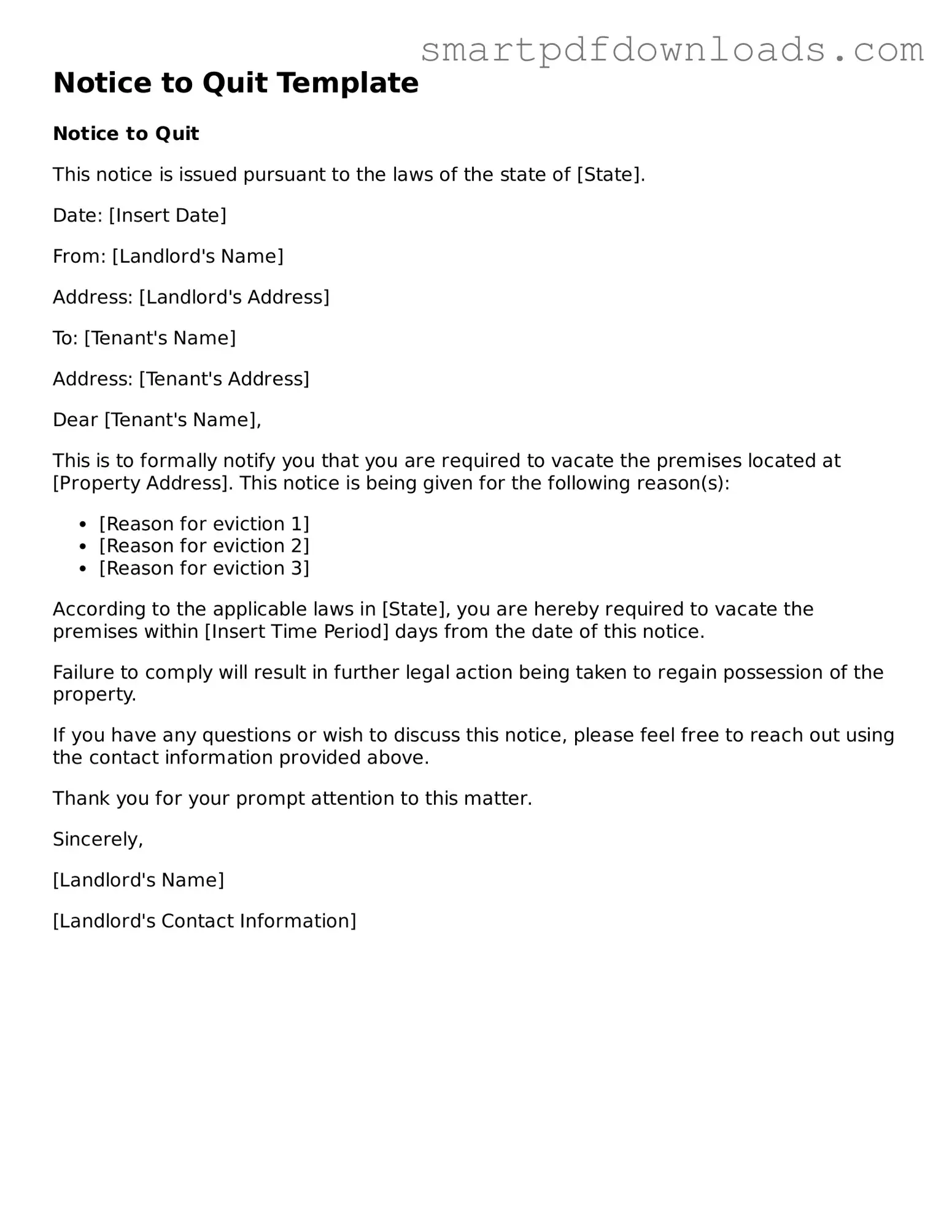Free Notice to Quit Form
The Notice to Quit form is a legal document that landlords use to inform tenants of their intention to terminate a rental agreement. This form serves as a formal request for tenants to vacate the premises, typically due to lease violations or non-payment of rent. Understanding the requirements and implications of this document is crucial for both landlords and tenants to ensure compliance with local laws.
Edit Notice to Quit Online
